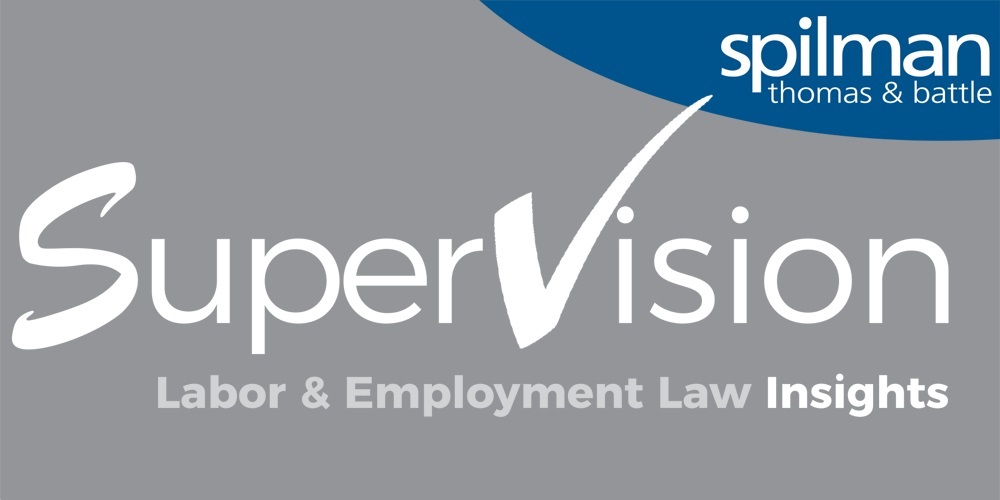Article
Resources
Article
Safety Issues in the Spotlight: Recent Updates from OSHA

The Occupational Safety and Health Administration (OSHA) is proposing a number of new rules that all employers need to track and to be prepared to respond. Here is an update on four significant topics making their way through the rulemaking process.
1. OSHA is considering amending its regulations to allow third parties to accompany OSHA inspectors during inspections.
Currently, regulations permit employee representatives, provided they are employed at the site, to accompany Compliance Safety and Health Officers (CHSOs) in their inspections. Under a recently published Notice of Proposed Rulemaking (NPRM), OSHA is proposing to add language to authorize the “employee representatives” to include third parties, provided they have “relevant knowledge, skills or experience with hazards or conditions in the workplace or similar workplaces, or language skills.”
The impact of the proposed change is clear – employees favorable to unions could nominate union officials with specific safety training or knowledge to accompany the OSHA inspectors. That access would help unions that want to target a plant or worksite for a union organizing drive.
This is not the first time OSHA has attempted to implement a change of this nature. In 2013, OSHA sought to implement this change without altering regulations via the “Fairfax Memo,” which stated that “workers at a worksite without a collective bargaining agreement may designate a person affiliated with a union or a community organization to act on their behalf as a walkaround representative.” In 2017, this memo was rescinded by the Trump administration.
We expect serious employer opposition to this proposed rule change. Interested employers should submit comments (which can be done electronically at http://www.regulations.gov) by following the procedures set out on the OSHA website for Docket No. OSHA-2023-0008. Comments may be submitted until November 13, 2023.
2. Rules expanding submission requirements for injury, illness data provided by employers in high-hazard industries
The final rule for expanded submission requirements for injury and illness data for certain employers in high-hazard industries takes effect January 1, 2024, and will require affected employers to electronically submit injury and illness information – that they are already required to keep – to OSHA.
The final rule includes the following submission requirements:
- Establishments with 100 or more employees in certain high-hazard industries must electronically submit information from their (i) Form 300-Log of Work-Related Injuries and Illnesses, and (ii) Form 301-Injury and Illness Incident Report to OSHA once a year. These submissions are in addition to submission of Form 300A-Summary of Work-Related Injuries and Illnesses.
- To improve data quality, establishments are required to include their legal company name when making electronic submissions to OSHA from their injury and illness records.
- OSHA will publish some of the data collected on its website to allow employers, employees, potential employees, employee representatives, current and potential customers, researchers and the general public to use information about a company's workplace safety and health record to make informed decisions. OSHA believes public access to the data will ultimately reduce occupational injuries and illnesses. In a press release, OSHA stated the procedures would provide the agency and the public with an understanding of the safety and health problems workers face. The agency also says it will use this data to intervene through strategic outreach and enforcement to reduce worker injuries and illnesses in high-hazard industries.
The final rule retains the current requirements for electronic submission of information from Form 300A for establishments with 20-249 employees in certain high-hazard industries and from establishments with 250 or more employees in industries that must routinely keep OSHA injury and illness records. The announcement follows proposed amendments announced in March 2022 to the regulations for requiring specific establishments in certain high-hazard industries to electronically submit information from their Log of Work-Related Injuries and Illnesses and their Injury and Illness Incident Report.
3. New Rules on Heat Exposure in the Workplace Continue the Regulatory Process
In 2021, OSHA released a proposed rule on workplace standards to protect workers from heat-related illnesses. Coupled with the proposed rule, OSHA has been intensifying its enforcement for workers exposed to heat hazards. Most recently, in July 2023, OSHA issued a “heat hazard alert,” reminding employers of their obligation to protect employees against heat illness or injury.
OSHA continues to take steps to move its proposed heat rule to a final status. To that end, OSHA announced it initiated the Small Business Regulatory Enforcement Fairness Act (SBREFA) process on June 20, 2023. This next step in the rulemaking process will include the convening of a Small Business Advocacy Review (SBAR) panel to gain input from small entity representatives (SERs) on the potential impacts of a heat-specific standard. More information on the Heat Injury and Illness SBREFA can be found here: https://www.osha.gov/heat/sbrefa.
4. VPP Modernization
OSHA continues to evaluate changes to its Voluntary Protection Programs (VPP). The VPP has been in place since 1982 to recognize workplaces with exceptional safety and health management. As noted by OSHA, “VPP was groundbreaking, being among the first programs to employ a management system structure emphasizing management leadership, worker participation, robust hazard identification and control, and training.” As the program is now more than 40 years old, the program has grown to include a wide variety of organizations in many industries; however, VPP requirements have not been updated since 1989. OSHA published its Recommended Practices for Safety and Health Programs in 2016 and consensus standards have been published at both the national (ANSI Z10-2019) and international level (ISO 45001-2018). On June 15, 2023, OSHA held a public meeting on this topic and changes continue to be considered.
For further information on these or other safety topics, contact Mark Heath, Co-chair of the Spilman OSHA practice group at 304-340-3843 or mheath@spilmanlaw.com.


